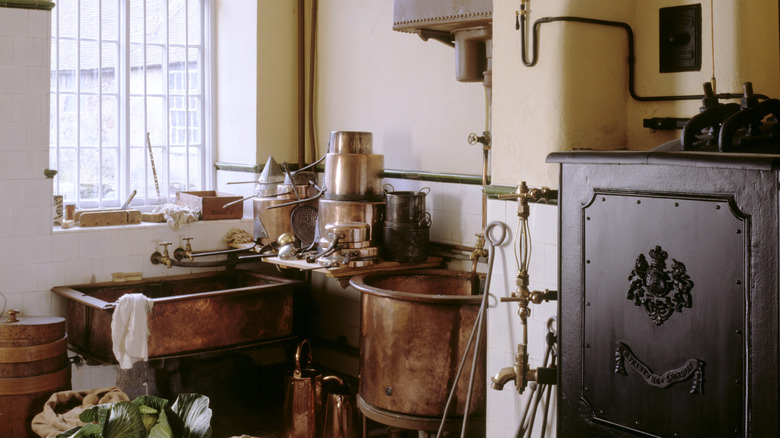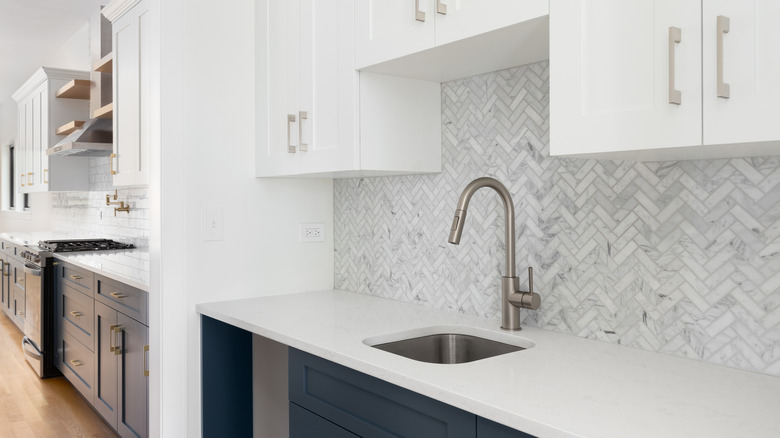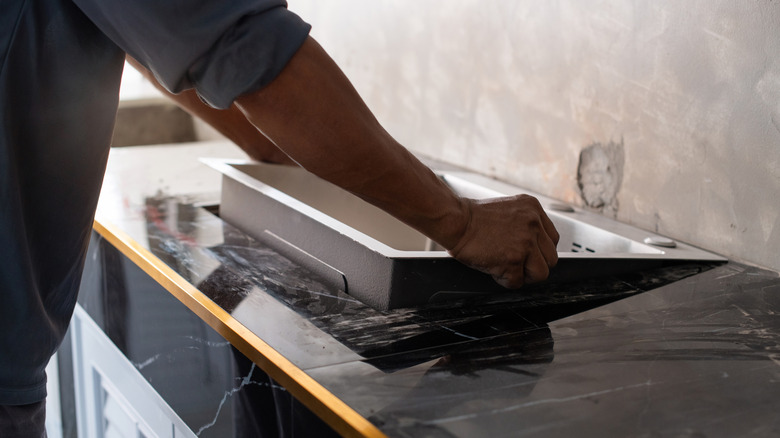What Is A Scullery And Should You Add One To Your Home?
Sculleries have recently been gaining in popularity, but the term may still be one you aren't familiar with. A "scullery" certainly sounds like something that's now been buried by history (it dates back to the Victorian era), but it's actually a quite useful room for your 21st century house, as well. And if you've ever thrown a party and gone absolutely crazy in the lead up trying to figure out how to prepare all that food while still keeping your kitchen sparkling clean for guests, then you'll be please to know that a scullery is exactly what you're dreaming of.
What is it, though? By definition, the scullery is a room near the kitchen that was commonly used to do most of the typical, messy, kitchen tasks thus leaving the actual kitchen in a more presentable state for guests. Sounds like a luxury, doesn't it? Yes, historically it may have been something more reserved for the wealthy, but contemporary versions are more accessible for everyday folks. If you're someone who loves to entertain, it may be time to consider a scullery as the ultimate functional (and nostalgic) addition to your home.
Sculleries are the second kitchens you never knew you needed
Historically, the scullery was a room located either as an insert or directly next to the kitchen, and its purpose was basically a catch-all for the dirty work of the house. This would typically include washing, drying and preparing all kitchen items, as well as doing the household's laundry. The duties of the scullery were often performed by a member of staff known as the scullery maid who was typically the lowest ranking member in the home.
Previously, the scullery and its staff may have been pretty dreary, but in today's world this room would be a useful and pleasant addition to any home. With the current abundance of open concept homes, a separate scullery could expertly hide away the workings of the kitchen (much as it did historically) and elevate your kitchen from a multiuse space into a pristine entertaining area. The scullery can be designed as its own room or simply hidden behind a half wall. When hosting, this extra space can be used for all your preparation as well as to hold used kitchenware until after your event — keeping your main space free and clear for your guests. Imagine how much more carefree your next hosting gig could be if you didn't have to focus on any clean up and could leave it all in the scullery to be dealt with later!
How does a scullery differ from a butler's pantry?
If you're confused on how a scullery might differ from the beloved butler's pantry, let's dive into the details. A butler's pantry was used primarily as an in-between room that separated guests and the kitchen. This allowed food to be served seamlessly in a high-end manner with all of the prep hidden from view. Though similar in their purpose of hiding kitchen duties, the butler's pantry was more for plating and serving food in an aesthetically pleasing way, while the scullery catered to the actual preparation and cleanup of all food related items (plus other household work like the laundry).
Butler's pantries typically had no appliances while sculleries needed to be outfitted with many, especially sinks for washing. Either of these rooms can be a unique and helpful historical addition to modern homes, though, and their purposes could easily be combined in one space, giving you the best of both worlds.
Will a scullery boost the value of your home?
As with any potential home addition, it's important to do your homework. Before you get to planning, you'll want to understand the benefits of adding a scullery. According to Angi, a scullery addition to your home can range from $5,000 to $15,750 depending on if you are okay with a smaller addition or want a larger scale, fully-equipped scullery. Though you could add a room with no appliances, that may fall more under the butler's pantry category, whereas a true scullery would need at least a sink to wash and prepare food items
Is ROI your focus? Unfortunately, there's not much info out there to either support or discourage adding a scullery. Some buyers may have preferred the area to be used in different way while others may love the addition, especially if they often entertain large amounts of guests. Your personal kitchen ideas and inspiration will lead the way on making this choice. Do keep in mind how valuable space is (especially in the kitchen). If you already have a smaller kitchen, you should consider a full add-on rather than outfitting and renovating important existing space.
The Dos and Don'ts of Designing a Scullery
So, you've decided to pull the trigger on a scullery addition and now you need to know how to do it right. First, there are some elements of a scullery that need to be included if you want to stick true to this room's purpose. As a space designated for preparing, washing, and drying food items, you want to ensure your new scullery is equipped to perform these tasks. Make sure you design the space to include a sink, plenty of counter space, and ideally a dishwasher. To keep a well-flowing design, have the scullery's color scheme and other aesthetic features complement the rest of your home.
One thing you definitely don't want to do is make this space too cramped or cluttered. The scullery was traditionally a very utilitarian space.Keep that in mind with your functional design and don't force the space to hold more than it can, or more than it needs. Keep the space's design focused, so the room can serve the purpose it's meant to.
Now that the dos and don'ts are out of the way, get excited about your new space! Your scullery will be a perfect addition to hide away your kitchen's mess and set you up for an easy weekend of entertaining.


